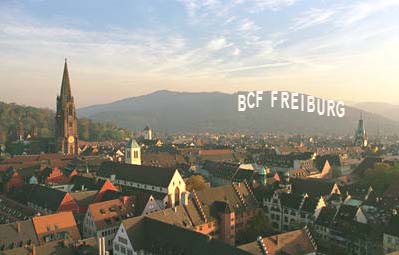Peter Thomas (Department of Mathematics, Applied Mathematics, and Statistics, Case Western Reserve University Cleveland, Ohio)
"Measuring edge importance: A quantitative analysis of the stochastic shielding approximation for random processes on graphs" / Tuesday, June 03, 2014, 17:15 h
| Wann |
03.06.2014
von 17:15 bis 18:45
|
| Wo |
Lecture Hall, Hansastr. 9a
|
| Termin übernehmen |
 vCal
vCal
 iCal
iCal
|
|
The Bernstein Center Freiburg
Bernstein Seminar
|
|
|
Peter Thomas
Department of Mathematics, Applied Mathematics, and Statistics
Case Western Reserve University
Cleveland, Ohio
currently visiting the BCCN Berlin
Measuring edge importance: A quantitative analysis of the stochastic shielding approximation
for random processes on graphs
|
|
Tuesday, June 03, 2014
17:15 h
|
Lecture Hall (ground floor)
Bernstein Center Freiburg
Hansastraße 9A
79104 Freiburg |
Abstract:
Mathematical models of cellular physiological mechanisms often involve random walks on graphs representing transitions within networks of functional states. Schmandt and Galán recently introduced a novel stochastic shielding approximation as a fast, accurate method for generating approximate sample paths from a finite state Markov process in which only a subset of states are observable. For example, in ion channel models, such as the Hodgkin-Huxley or other conductance based neural models, a nerve cell has a population of ion channels whose states comprise the nodes of a graph, only some of which allow a transmembrane current to pass. The stochastic shielding approximation consists of neglecting fluctuations in the dynamics associated with edges in the graph not directly affecting the observable states. We consider the problem of finding the optimal complexity reducing mapping from a stochastic process on a graph to an approximate process on a smaller sample space, as determined by the choice of a particular linear measurement functional on the graph. The partitioning of ion channel states into conducting versus nonconducting states provides a case in point. In addition to establishing that Schmandt and Galán's approximation is in fact optimal in a specific sense, we use recent results from random matrix theory to provide heuristic error estimates for the accuracy of the stochastic shielding approximation for an ensemble of random graphs. Moreover, we provide a novel quantitative measure of the contribution of individual transitions within the reaction graph to the accuracy of the approximate process. (Joint work with Deena Schmidt, Case Western Reserve University.)
|
|
|
|
The talk is open to the public. Guests are cordially invited!
www.bcf.uni-freiburg.de |
        |








